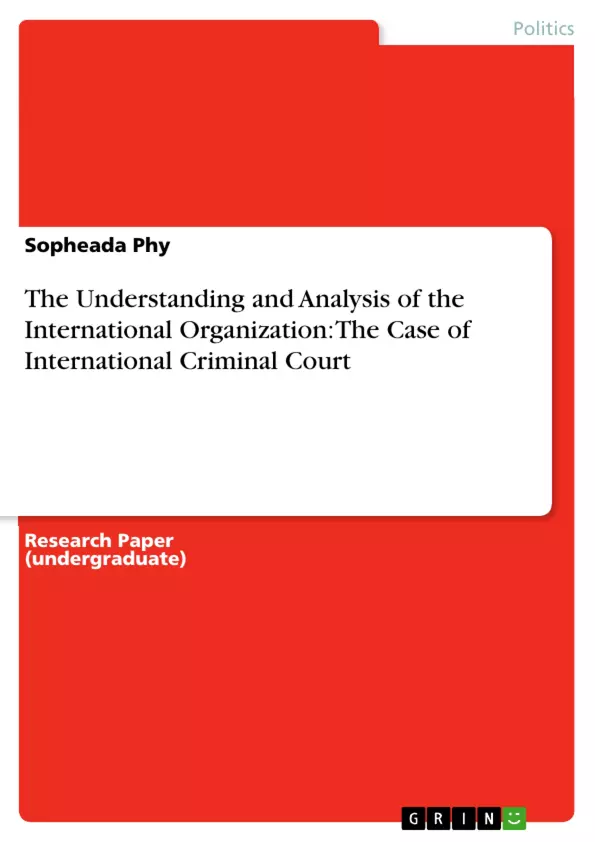Archer (2001) defines international organization as “a formal, continuous structure established by agreement between members (governmental and/or non-governmental) from two or more sovereign states with the aim of pursuing the common interest of the membership” (p. 33). Also, the international organization has three main characteristics—membership, aim, and structure. It should have at least two sovereign states as members, with the aim of pursuing common interest of the members, and has a formal structure established by an agreement officially adopted by all the members (Archer 2001). Taking the International Criminal Court (ICC) into consideration, it meets all the above criteria, so it can be regarded as an international organization. The following will address and analyze the genesis, aim, membership, structure, work, and challenges of the ICC.
Inhaltsverzeichnis (Table of Contents)
- Introduction
- The Genesis of the ICC: When, Why and How?
- The Aim of the ICC
- Membership
- The Structure of the ICC
- Assembly of States Parties
- The Presidency
- Judicial Divisions
- Office of the Prosecutor
- The Registry
Zielsetzung und Themenschwerpunkte (Objectives and Key Themes)
This research paper aims to provide a comprehensive understanding and analysis of the International Criminal Court (ICC) as an international organization. The paper explores its genesis, purpose, membership, structure, and the challenges it faces.
- The historical context of the ICC's creation
- The ICC's mandate and jurisdiction
- The ICC's organizational structure and key actors
- The challenges faced by the ICC in its operation
- The ICC's role in promoting international justice and accountability
Zusammenfassung der Kapitel (Chapter Summaries)
The introduction defines international organizations and establishes the ICC as one, outlining the key aspects to be explored. The next section delves into the ICC's genesis, tracing the evolution of the idea of an international criminal court from the 19th century through to the post-World War II era, highlighting the pivotal role of ad hoc tribunals and the eventual establishment of the ICC in 2002.
The chapter on the ICC's aim clarifies its purpose as stated in the Rome Statute: to prosecute individuals responsible for the most serious crimes of international concern, including genocide, crimes against humanity, and war crimes. The chapter also elaborates on the court's jurisdiction, outlining its territorial, personal, and temporal scope.
The membership section provides an overview of the states that have become parties to the Rome Statute, including key regions and notable exceptions, such as the United States and Israel.
Finally, the chapter on the ICC's structure examines the four main organs: the Assembly of States Parties, the Presidency, the Judicial Divisions, the Office of the Prosecutor, and the Registry. The chapter delves into the functions and responsibilities of each organ within the overall structure of the court.
Schlüsselwörter (Keywords)
The core keywords of this research paper include: International Criminal Court (ICC), international organization, international justice, Rome Statute, genocide, crimes against humanity, war crimes, state parties, Assembly of States Parties, Presidency, Judicial Divisions, Office of the Prosecutor, and Registry.
- Quote paper
- Sopheada Phy (Author), 2009, The Understanding and Analysis of the International Organization: The Case of International Criminal Court, Munich, GRIN Verlag, https://www.grin.com/document/149252



